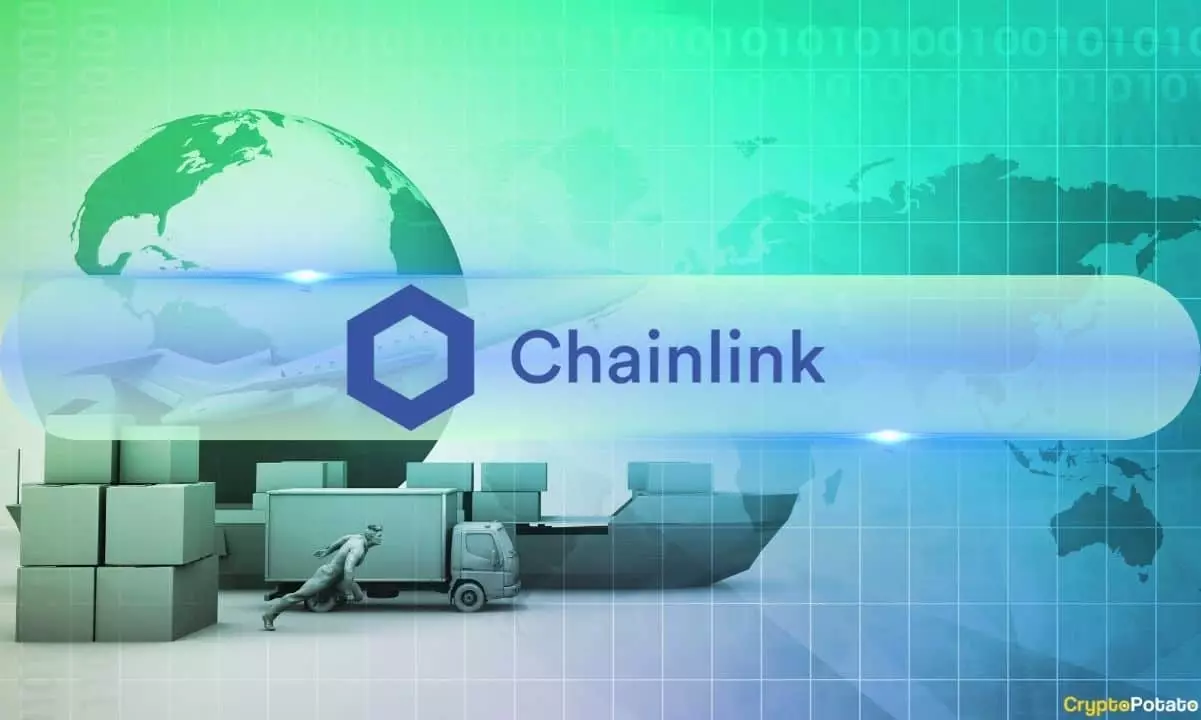The recent advancements in blockchain technology, particularly the integration of tokenized US equities and ETFs, are often hailed as revolutionary moments that promise to democratize access to traditional financial markets. Companies like Chainlink are at the forefront, providing real-time data streams that facilitate seamless on-chain trading of assets previously confined to legacy systems. These developments are presented as a significant step toward a more inclusive and efficient financial ecosystem—yet beneath this shiny veneer lies a complex web of challenges that threaten to undermine these lofty aspirations.
While the idea of trading tokenized stocks 24/7 on decentralized platforms sounds appealing, it disguises the fundamental friction and regulatory hurdles that continue to haunt such innovations. The concept hinges on the assumption that real-world assets can be perfectly represented and managed within a blockchain’s transparent, trustless environment. However, the reality is far messier. Market hours, liquidity concerns, and the integrity of data sources remain persistent obstacles, raising questions about whether this progress is more about technological spectacle than practical, reliable integration.
The Technological Mirage: Reliability versus Reality
Chainlink’s Data Streams boast impressive features: high-frequency pricing, staleness detection, and structured data schemas designed for DeFi composability. These are technical achievements that can significantly enhance decentralized derivatives, lending, and other financial instruments. Yet, these features operate within an environment rife with uncertainty. Aggregating data from multiple sources seems robust in theory, but in practice, the quality of input data—especially from traditional markets—can sway unpredictably due to outages, delays, or inaccuracies.
Additionally, markets like equities and ETFs are subject to the constraints of the traditional financial world—market hours, trading halts, and regulatory interventions—that do not translate cleanly to a 24/7 blockchain environment. The enforcement of market hours through data streams may mitigate some risks, but it cannot eliminate them. Once tokenized assets enter the blockchain, they are vulnerable to manipulation, arbitrage, and systemic glitches that the current infrastructure isn’t fully equipped to handle.
Moreover, the reliance on multiple data sources, despite increasing redundancy, cannot fully prevent discrepancies. The potential for discrepancies between on-chain prices and actual market prices, especially during volatile periods, poses risks to traders and protocol health. These inaccuracies could lead to erroneous liquidations or mispriced derivatives—outcomes that can snowball into systemic failures if not meticulously managed.
The Illusion of Complete Market Accessibility
Tokenization is often heralded as a tool to unlock access for retail investors, making equities available “around the clock.” Yet, access is only part of the equation. Regulatory considerations, compliance requirements, and the legal status of tokenized securities remain largely unaddressed. Without a clear framework, these assets could become flashpoints for regulatory crackdowns or result in legal ambiguities that hamper adoption.
Furthermore, partial solutions like Data Streams, while technically impressive, don’t fundamentally alter the underlying issues of market opacity, information asymmetry, and systemic vulnerabilities. For example, arbitrage opportunities enabled by differing prices on-chain versus traditional markets could be exploited by sophisticated traders, but this also introduces new risk vectors that may destabilize small protocols and retail participants.
There is also an ideological concern: by pushing traditional assets onto a blockchain, we risk creating a superficial veneer of transparency and efficiency without addressing the core inefficiencies in the original markets. Tokenized ETFs and stocks may look like the future, but they often operate under the same economic and regulatory distortions, merely dressed in new technological garb. This could foster misplaced optimism, leading stakeholders to believe that technological fixes can solve deeply ingrained market issues.
Finding the Reality Behind the Hype
In pursuit of innovation, it’s tempting to see these developments as the next logical step in financial evolution. Still, skeptics should recognize that technological progress does not automatically equate to market integrity or safety. A more pragmatic approach would insist on rigorous testing, regulatory clarity, and acknowledgment of the limitations inherent in integrating traditional markets with blockchain systems.
While proponents assert that these tools will propel us toward a decentralized future, it’s important to remember that the foundations of the current financial system—regulation, oversight, and human judgment—cannot simply be bypassed with better data streams or more sophisticated protocols. Market fragility, systemic risk, and regulatory compliance will continue to shape the trajectory of tokenized assets, regardless of technological prowess.
Amidst the excitement, industry players must remain critical, understanding that blockchain-based market integration is a marathon, not a sprint. Real progress will depend less on shiny features and more on building resilient, transparent, and legally compliant infrastructure capable of navigating the complex realities of global finance. Without that, what appears to be a new dawn is ultimately just a mirage—an impressive illusion of progress that may not withstand the test of time.

